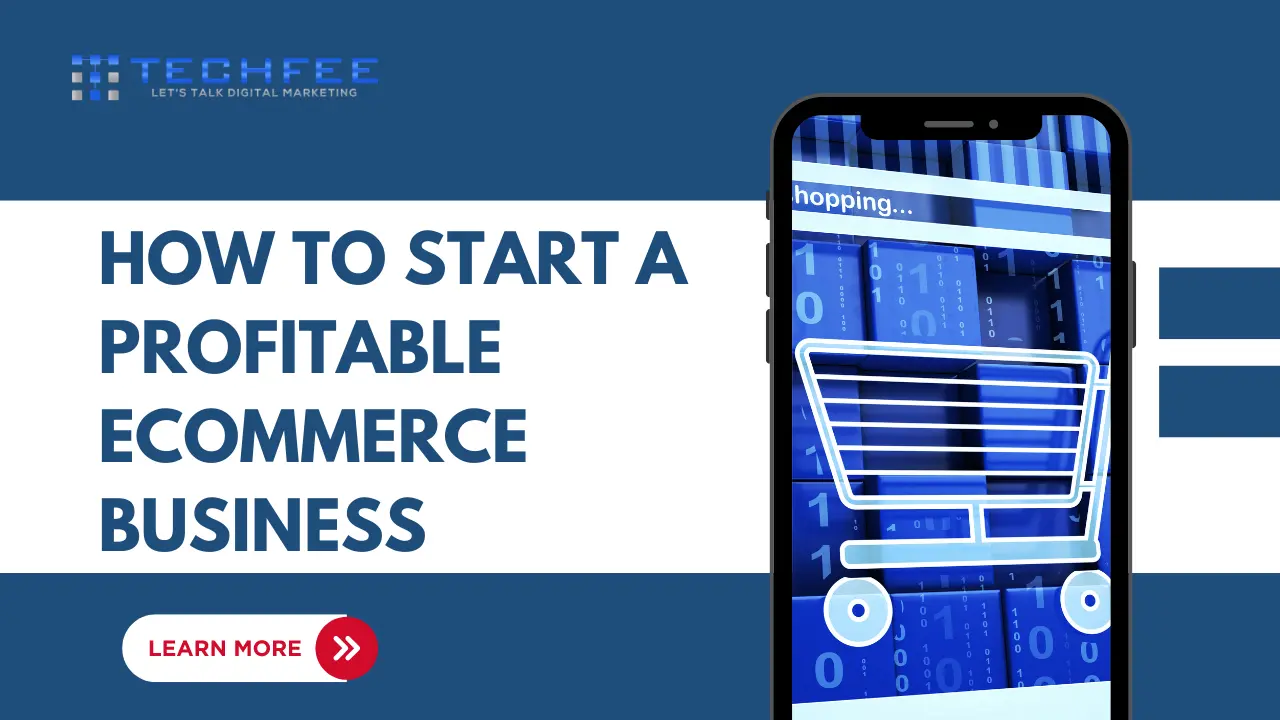Starting an e-commerce business can be a game-changer in today’s digital world, but knowing how to start an e-commerce business that thrives is critical to long-term success.
The world of online shopping is changing quickly and is more competitive than ever. As consumer expectations rise and technology changes rapidly, opening an online store is no longer enough to ensure success.
To thrive in this dynamic landscape, you need to establish a resilient e-commerce business that can cater to the current market needs and navigate future challenges.
According to a USA Today report, out of over 26.2 million e-commerce sites globally, over 13 million are U.S.-based. According to the U.S. Census Bureau, e-commerce sales comprised 15.6% of total U.S. retail sales by the end of 2023. According to Insider Intelligence and eMarketer, worldwide e-commerce sales are expected to exceed $6 trillion in 2024.
This comprehensive guide is designed to equip you with the necessary information and tools to navigate the intricate world of e-commerce, from identifying a lucrative niche to leveraging the latest technologies.
Whether you’re a novice or aiming to expand your existing business, this guide will empower you to build a sustainable e-commerce business that will stand the test of time.
What Is E-Commerce?

E-commerce, which stands for “electronic commerce,” is when people buy and sell things and services over the internet. It includes a lot of different types of online business, from shopping and selling digital goods to banking and subscription services.
E-commerce, on the other hand, lets businesses reach customers all over the world 24 hours a day, seven days a week. This breaks down geographical borders and makes things much easier for both sellers and buyers.
Today, e-commerce is more than just an option to stores; it’s an important part of the modern economy.
This is because technology is getting better, people’s habits are changing, and the world is becoming more digital.
Types of E-Commerce Businesses
Different types of e-commerce businesses meet the needs of different markets and customers.
One of the major types is Business-to-Consumer (B2C), which is when a business sells directly to a consumer, like an online store.
Business-to-Business (B2B) e-commerce is when two businesses buy and sell things online. This is usually done through trade or supply chain management.
Like internet markets, consumer-to-consumer (C2C) platforms let people buy and sell directly with each other.
Another type is Consumer-to-Business (C2B), in which people sell goods or services to businesses. This happens a lot in freelance work and influencer marketing.
Also, newer business models like Direct-to-Consumer (DTC) and subscription-based ones are becoming more popular because they offer more personalized shopping experiences.
Knowing about these types helps business owners pick the right plan for their online store, which fits their and the market’s needs.
The Role of Technology in Modern E-Commerce
Technology is a big part of modern e-commerce. It drives new ideas and changes how businesses work and talk to customers. Technology is what makes e-commerce strategies work.
Chatbots driven by AI that improve customer service and data analytics tools that give you information about how customers behave are just two examples.
Advanced algorithms make shopping more personal, and automation makes everything easier, from managing goods to running marketing campaigns.
Also, new technologies like augmented reality (AR) and virtual reality (VR) are changing the way people look at and buy things online by making shopping more engaging.
As e-commerce changes, companies that want to do well in this competitive market need to stay on top of the latest technological trends.
How much profit are you currently leaving behind?
How to Start an E-Commerce Business: Step by Step
Market Research and Niche Selection
Before you start your e-commerce business, you should do a lot of study on the market and choose a niche that fits your products and services well.
First, find profitable e-commerce niches by looking for market gaps, hot products, and places where customers’ wants aren’t being met.
Think about your own skills and hobbies. Aligning your business with your passions can give you an edge over other businesses. After you’ve found possible niches, look at the industry and market demand.
Use tools like Google Trends, keyword research, and competitor analysis to find out how big your niche is and how many other people are in it.
Check to see how full the market is and look for ways to make your products stand out. The last step is to figure out who your target group is.
Know your customers, their problems, and how your products can help them. Create detailed buyer profiles that show your ideal customers’ personalities, interests, and buying habits.
This step-by-step process will help you pick a niche with high demand, low competition, and a clear audience.
This will set you up for a successful online store today and beyond.
Business Planning Essentials
To start an e-commerce business, you need a good business plan, thorough financial planning, and careful thought about the legal and structural aspects.
Start by writing a detailed e-commerce business plan that includes your company’s goals, your target market, the products you’ll sell, and how you’ll market them.
With this plan as a road map, you can make smart choices and stay focused on your goals as your business grows.
Next, start planning your finances by making a reasonable budget and guessing how much money you will make and spend.
Think about all the costs, such as finding products, building a website, marketing, and running the business. Making accurate budgets is a good way to keep your business financially stable and ready for any problems that may come up.
Finally, think about legal issues by picking the right type of business structure, like a sole proprietorship, partnership, LLC, or corporation, based on your needs and the amount of liability protection you need.
Also, make sure to register your business, get any licenses you need, and follow all e-commerce rules, such as tax laws and laws protecting customers.
By carefully planning these things, you build a strong base for an e-commerce business that will be successful.
Building Your E-Commerce Brand
To connect with your target audience and stand out in a crowded market, you need to build a strong e-commerce brand. The first step is to create a unique brand name that shows what your business is all about.
Your business identity should show what makes you different from other companies and what your core values are.
Everything about your business will be affected by this character, from the tone of your marketing materials to how you treat your customers in general.
Next, work on making a brand story that people will want to read and connect with.
A brand story is more than just the things you sell; it’s about your business’s journey, passion, and goal.
Your story should make people feel something and connect with them, whether it’s about what inspired you to start your e-commerce business, the problems you’ve solved, or the difference you want to make.
A well-written brand story not only gets people interested in your brand, but it also makes them loyal by giving them a reason to support it.
Lastly, make a logo and visual character that people will remember and that shows what your brand is all about. Your image should be simple, flexible, and easy to remember so that it stands for your business strongly.
Along with the image, you should create a visual identity that includes color schemes, fonts, and design elements that show your brand in the same way on all platforms.
This visual identity should look good and fit with your brand’s personality so that it makes a lasting impression on customers.
Choosing the Right E-Commerce Platform
Picking the right e-commerce platform is a very important choice that can have a big effect on how well your online business does.
First, learn about some of the most famous e-commerce platforms, such as Shopify, WooCommerce, BigCommerce, and Magento. Each of these has its own set of features and functions.
Shopify is great for beginners because it has an easy-to-use design and great customer service. WooCommerce, on the other hand, is great for people who already know how to use WordPress because it gives them more freedom and customization options.
BigCommerce is good for small businesses that want to grow, and Magento is good for bigger businesses with more complicated needs.
Next, compare the platforms by listing the good and bad points of each one.
Think about how easy it is to use, how scalable it is, how customizable it is, how much it costs, and what connections are available.
For example, Shopify’s ease of use and large app store are big pros, but its transaction fees can be a cons. WooCommerce is free to use at first, but you may need to learn more about technology and pay extra for hosting and apps.
BigCommerce has great SEO tools and doesn’t charge any fees for transactions, but it may not have as many design choices as other sites. Magento gives you more control and customization options than any other platform, but small businesses may find it too hard to handle due to its complexity and higher costs.
Lastly, pick the platform that will work best for your business by making sure it fits your goals, budget, and expert skills. If you don’t know much about technology and want to open a small to medium-sized store, Shopify or BigCommerce might be the best choice for you.
WooCommerce or Magento might be better for businesses that want to make a lot of changes and have a lot of power. Think about how your business will grow in the long run.
The platform you choose should be able to handle that. By looking at each one carefully, you can pick an e-commerce platform that fits your business plan and will help you succeed today and beyond.
Website Development and User Experience (UX)
When you open an online store, website creation and user experience (UX) are two very important factors that can make or break your business.
Start by making a website that is easy for people to understand and use, so they can easily move from looking to checking out.
It should be easy to navigate, have clear calls to action, and be designed in a way that shows off your goods. Make sure that visitors can quickly find what they’re looking for without getting confused or frustrated by putting simplicity and usefulness first.
Next, make sure your website has the important features that make e-commerce work.
Some of these are a safe and easy checkout process, a number of payment options, the ability to look for products, and ways for customers to get help, such as live chat or a frequently asked questions (FAQ) page.
Product pictures, details, and reviews from other customers that are of high quality are also very important for building trust and getting people to buy. Adding features like wish lists, product suggestions, and recovering abandoned carts can also make shopping more enjoyable and increase sales.
Additionally, mobile optimization is necessary in today’s digital world because many online purchases are made on mobile devices. Your website must be responsive, which means that it should change instantly to fit different screen sizes.
This way, users on phones, tablets, and computers will all have the same great experience. To keep mobile users, you need to make sure that pages load quickly, buttons are easy to click, and scrolling is simple.
Making sure your website works well on mobile devices lets you reach more people and take advantage of the growing trend of shopping on the go.
Product Sourcing and Inventory Management

If you want to run a successful e-commerce business and meet customer standards, you need to be able to find products and keep track of your inventory well.
Start by looking for suppliers and makers you can trust to give you high-quality goods at fair prices. Do a lot of study, ask for samples, and check the credentials of the supplier to make sure they meet your business’s needs.
You can get better terms and more reliable fulfillment from your sellers if you have good relationships with them.
Next, use best practices for inventory management to keep track of stock amounts, avoid having too much or too little stock, and make it easier to fill orders.
Inventory management software lets you see what you have in stock at all times, plan reorders, and guess how much demand there will be.
Reviewing your inventory data on a regular basis will help you decide how much to stock and help you figure out which items aren’t selling well and might need to be discounted or promoted.
Pick between dropshipping and storage based on how you run your business and the resources you have. When you dropship, you work with sellers who take care of inventory and shipping.
This lets you focus on sales and marketing without having to worry about the costs of storage. This plan cuts down on the amount of money needed up front and the risk involved, but it may mean lower profits and less control over shipping times.
In warehousing, on the other hand, you have to buy and store your own goods, which can mean higher start-up costs but gives you more control over stock and the fulfillment process.
Think about your budget, the types of products you sell, and your business goals to choose the method that fits your needs and will help you achieve e-commerce success.
Setting Up Secure Payment and Shipping Solutions
For your e-commerce business to build trust and run smoothly, you need to set up safe ways for customers to pay and ship items.
First, choose the right payment gateways and make sure they work well with your online store. Payment platforms like PayPal, Stripe, and Square let you accept credit cards, debit cards, and digital wallets, among other payment methods. They offer a range of features and are easy to use.
Pick a gateway that fits the needs of your business and makes buying easy for customers.
Protecting customer info and making sure transactions are safe are important for keeping trust and following the rules.
Secure Socket Layer (SSL) certificates can help protect the private data sent between your website and your buyers.
To keep payment information safe, make sure your security procedures are always up-to-date and that you follow rules like the Payment Card Industry Data Security Standard (PCI-DSS).
Also, make sure your customers understand your privacy policy and how you protect their data so they feel safe giving you their personal and business information.
When planning your shipping strategies, think about both domestic and international choices so you can reach more people. When sending within the United States, compare different carriers and services to find the most reliable and cost-effective ones.
Also, let customers choose from a range of shipping speeds to meet their needs. When shipping something internationally, you need to think about things like customs rules, shipping prices, and delivery times.
Think about using global shipping platforms and solutions that make foreign logistics easier and let customers see exactly where their packages are at all times.
Implementing Effective Marketing Strategies
For your e-commerce business to get more visitors and turn them into loyal customers, you need to use good marketing tactics.
Start with SEO for e-commerce by following best practices to make your store show up higher in search results.
Add relevant keywords, interesting meta descriptions, and high-quality images to your product pages to boost your results and get free traffic.
To improve both user experience and SEO performance, make sure your site is properly optimized with fast loading times, mobile responsiveness, and a clear site structure.
Make people aware of your business on social media by posting interesting things and becoming active on sites like Instagram, Facebook, and Twitter. Connect with your audience through these platforms.
Share new products, run sales, and talk to customers. You can also attract more people and get more relevant people to visit your website with social media advertising.
Brand recognition and customer loyalty can be built through consistent branding and creative efforts that are geared toward your target audience.
Lastly, work on email marketing by getting more people to sign up for your list and keeping them interested.
To get people to sign up, offer discounts or special content, and divide your email list into groups based on what customers like and how they act.
Make personalized, interesting email campaigns that offer something of value, like product suggestions, special deals, or useful information. Regularly look at email success metrics to make your plans better and get more people to interact with your emails.
Paid Advertising Tactics
Paid promotion is an important part of starting an e-commerce business because it helps people find your store and brings in the right customers.
Pay-Per-Click (PPC) advertising is a good place to start because it lets you bet on keywords that are related to your business.
Pay-per-click (PPC) campaigns are available on platforms like Google Ads. These campaigns put your ads in search results and on related websites, which brings people to your site right away.
Focus on keyword research, ad copy optimization, and bidding methods to make sure you reach the right people and get a good return on your investment from your pay-per-click (PPC) campaigns.
Another great way to get a better return on investment and reach more people is to use social media ads. Use sites like Facebook, Instagram, and LinkedIn to make ads that are more relevant to users based on their demographics, hobbies, and actions.
Make ads that are interesting by using strong pictures and clear calls to action to get people to click through and buy. By using the targeting tools on social media sites, you can quickly reach your ideal customers, raise knowledge of your brand, and get the most out of your ad spend.
You should also use retargeting ads to encourage people who have visited your site before but haven’t bought anything to return. Users can see retargeting ads all over the web, which can remind them of your products and encourage them to come back and finish their purchases.
You can effectively develop leads and boost conversion rates by customizing retargeting ads based on user behavior, like shopping cart abandonment or product vie.
Scaling Your E-Commerce Business
To grow your e-commerce business, you need to take smart steps to keep it growing and make operations run more smoothly.
To attract more customers and make more money, start by adding more products to your store.
Study the market to find gaps or opportunities in your niche and then develop new products that complement your brand.
Regularly review your sales data and customer reviews to improve your products and ensure they meet the market’s needs.
Next, think about going into new areas to reach people all over the world and get more money. You should do a lot of study to learn about the cultural, economic, and legal aspects of potential markets.
Localize your website, marketing plans, and products to meet the needs and requirements of people in different areas.
Work with local partners or use foreign shipping services to make it easier to get into new markets and raise your profile around the world.
Lastly, use automation to make things run more smoothly and more efficiently. Use software and tools to automate jobs like keeping track of inventory, processing orders, and managing relationships with customers.
Automation can help cut down on mistakes made by hand, speed up fulfillment processes, and let you grow without making running costs go up by a lot.
By automating routine tasks, you can focus on long-term growth plans and improve the general performance of your business.
Managing Legal and Compliance Issues
Keeping up with legal and compliance issues is important for running a good e-commerce business and staying out of trouble with the law.
First, learn about the rules and taxes that apply to your business when it comes to e-commerce. This means following all local, state, and foreign rules about selling things online, protecting customers, and making sure products meet standards.
In the places where you do business, make sure you know and follow the tax rules for things like sales tax or VAT. Getting help from a lawyer or accountant can help you deal with these issues and stay in compliance.
Another important thing to talk about is data privacy laws, especially with rules like GDPR (General Data Protection Regulation) and CCPA (California Consumer Privacy Act). Businesses must follow strict rules on how to gather, store, and use customer data because of these laws.
Strong data protection measures should be put in place, such as safe data storage and processing protocols. Customers should also be told about their rights and how their information is used through clear privacy policies.
To stay in line with changing rules and build trust with your customers, you should review and update your practices on a regular basis.
Lastly, it’s important to protect your intellectual property to keep your brand and new ideas safe. You can stop people from using your brand name, image, and other unique elements without your permission by registering trademarks for them.
To protect your intellectual property rights, you might want to copyright original material like product descriptions and pictures.
You should also look into patent protection if you have created special technology or unique business processes to stay ahead of the competition.
Leveraging Technology and Innovation

In the world of e-commerce, it’s important to stay relevant and improve the customer experience by using technology and new ideas.
First, accept that AI and machine learning will have an effect on your business. These technologies can change many things.
AI-powered tools can look at customer data to make personalized suggestions, find the best price strategies, and use chatbots to handle customer service automatically.
Machine learning systems help you figure out how people buy things and guess what will happen in the future. This lets you make decisions based on data that increase sales and make customers happier.
Next, look into augmented reality (AR) and virtual reality (VR) to make shopping more engaging, which will keep customers interested and help you make sales.
AR technology lets people see how products will look in their own surroundings. For example, they can try on clothes virtually or see how furniture will fit in their home.
With VR, you can take tours of stores virtually or interact with product demos, which makes internet shopping more fun and real. These technologies make it easier for users to interact with each other and help customers make better buying choices.
Lastly, think about what blockchain technology could mean for e-commerce in the future. Blockchain can make transactions safer, make sure that goods are real, and make managing the supply chain easier.
You can build trust with customers and cut down on fraud by using blockchain to track where products come from and make sure deals are legitimate.
Smart contracts built on blockchain can also automate and protect different parts of e-commerce, like payments and managing inventory.
Related Articles:
E-commerce Marketing Automation: 10 Game-Changing Strategies for Maximum Impact
E-commerce Marketing Hacks: 27 Expert Tips to Grow Your Sales
How to Start Dropshipping for Free: Unlock Expert Tips & Tricks
The Ultimate Guide to Hiring E-commerce Startup Consultants in 2024: Why & How to Hire?
Do you want to start a profitable ecommerce business?
Life is too short to play by someone else’s rules. Here’s how you can build a business that supports the life you want.
Let’s Start with Your Options!
Get Started Now!Handling Common E-Commerce Challenges
Handling common e-commerce challenges effectively is key to maintaining smooth operations and ensuring customer satisfaction.
Managing inventory and supply chain disruptions involves implementing strategies for robust inventory management and establishing strong relationships with reliable suppliers.
Utilize inventory management software to track stock levels in real-time, forecast demand accurately, and automate reordering processes.
Develop contingency plans to address potential disruptions, such as diversifying suppliers and maintaining safety stock to mitigate the impact of unexpected delays or shortages.
Addressing cart abandonment and boosting conversion rates requires a multi-faceted approach. Start by optimizing the checkout process to reduce friction, such as minimizing the number of steps, offering guest checkout options, and ensuring transparent shipping costs.
Implementing retargeting campaigns can help remind customers of abandoned carts through personalized emails or ads.
Additionally, improve product page elements, such as high-quality images, detailed descriptions, and customer reviews, to enhance trust and encourage purchases.
Providing incentives like discounts or free shipping can also motivate customers to complete their purchases.
Handling negative reviews and customer complaints is crucial for maintaining a positive brand reputation.
Address complaints promptly and professionally, offering solutions or refunds where appropriate to resolve issues and show that you value customer feedback.
Monitor review platforms and social media for customer sentiments, and use feedback to make improvements to your products and services.
Constructively engaging with customers and showing empathy can turn negative experiences into positive outcomes and build customer loyalty.
By effectively managing these challenges, you ensure a smoother e-commerce operation and foster a strong, trustworthy relationship with your customers.
Success Stories and Case Studies
Lessons from Successful E-Commerce Brands
Successful e-commerce brands like Amazon, Shopify, and Warby Parker offer invaluable lessons for aspiring entrepreneurs.
Amazon’s rise to dominance teaches the importance of customer-centric innovation, relentless focus on convenience, and leveraging data analytics to personalize the shopping experience.
On the other hand, Shopify demonstrates the power of enabling other businesses, offering robust, user-friendly platforms that cater to various business needs, thus creating a thriving ecosystem.
Warby Parker’s story highlights the value of a strong brand identity and a direct-to-consumer model that disrupts traditional industries and builds a loyal customer base through transparency and social responsibility.
These brands show that long-term success in e-commerce requires not just a great product, but also a deep understanding of the market, a commitment to customer satisfaction, and the ability to adapt to changing trends.
Common Traits of Thriving E-Commerce Businesses
Thriving e-commerce businesses share several common traits that set them apart from the competition:
They prioritize user experience, ensuring that their websites are not only aesthetically pleasing but also easy to navigate, fast-loading, and mobile-friendly. They also invest heavily in digital marketing strategies, utilizing SEO, content marketing, and social media engagement to attract and retain customers.
Successful e-commerce companies often focus on building a strong brand presence, creating a consistent and compelling narrative that resonates with their target audience. Effective supply chain management is another crucial trait, ensuring that products are delivered promptly and efficiently.
These businesses are data-driven, using analytics to make informed decisions, optimize operations, and predict future trends.
Key Takeaways for Aspiring Entrepreneurs
Aspiring entrepreneurs looking to start an e-commerce business can glean several key takeaways from these success stories and common traits.
First and foremost, understanding your target market and catering to their specific needs is essential. Personalization and customer-centric approaches can significantly enhance customer loyalty and drive growth.
Building a strong online presence through a well-designed website and effective digital marketing strategies is crucial for visibility and engagement.
Furthermore, investing in robust logistics and supply chain management will ensure timely deliveries and customer satisfaction.
Finally, entrepreneurs should embrace data analytics as a tool for continuous improvement, helping to refine business strategies and stay ahead of the competition.
By learning from the successes and common practices of thriving e-commerce brands, aspiring entrepreneurs can build a foundation for a business that survives and thrives today and in the future.
Conclusion on How to Start an E-Commerce Business
To make an e-commerce business successful, you must take a broad approach that includes everything from learning about the e-commerce environment to using the newest technology.
You can set yourself up for success by following the critical steps in this guide:
- Doing thorough market research
- Making a solid business plan
- Building a unique brand identity
- Picking the right e-commerce platform
- Using effective marketing strategies
Focusing on customer interactions, using data analytics, and adopting environmentally friendly practices will also help your business last longer and be more appealing.
In e-commerce, which is always changing, keeping competitive means always adjusting to new technologies and trends.
It’s important to stay flexible and forward-thinking as customer tastes change and the digital market gets more crowded. Keep an eye on new technologies like AI, AR, and blockchain, and be ready to change the way you do business to use them.
Also, to connect with today’s ethical consumers, put customer experience, sustainability, and ethical methods at the top of your list.
By staying informed, adaptable, and dedicated to constant improvement, you can ensure that your e-commerce business not only lives but thrives for a long time to come.
FAQs on How to Start an E-Commerce Business
How Much Capital Do I Need to Start an E-Commerce Business?
The capital required can range from $1,000 to $50,000, depending on factors like product type, inventory, website development, and marketing. Start with a budget that covers essential costs and scale as revenue grows.
What Are the Best Ways to Drive Traffic to My E-Commerce Site?
Effective strategies include SEO optimization, social media marketing, content marketing, email campaigns, and paid advertising like Google Ads and Facebook Ads.
How Can I Ensure My E-Commerce Business is Scalable?
Focus on automation, efficient inventory management, robust e-commerce platforms, and a scalable marketing strategy. Regularly analyze data to optimize processes and adapt to growth.
What Are the Common Pitfalls to Avoid When Starting an E-Commerce Business?
Avoid neglecting market research, underestimating startup costs, ignoring customer service, and failing to invest in marketing. Also, don’t overlook the importance of a mobile-friendly website.
E. Is E-Commerce Actually Profitable?
Yes, e-commerce can be highly profitable with the right product selection, effective marketing, and efficient operations. However, success depends on consistent effort, market demand, and competitive positioning.










